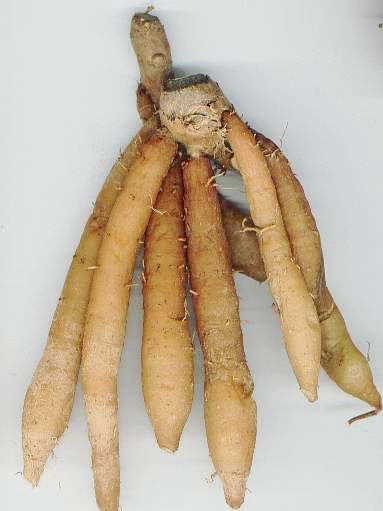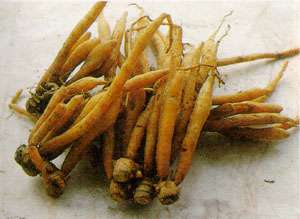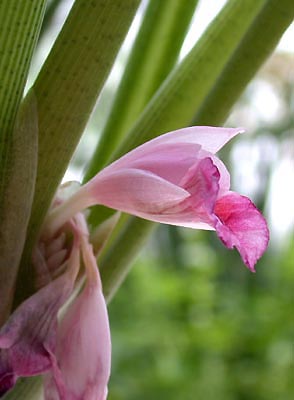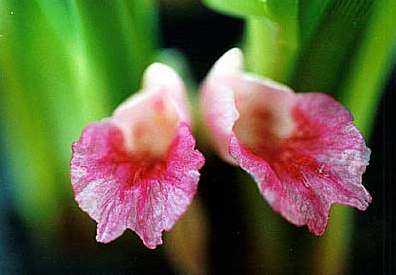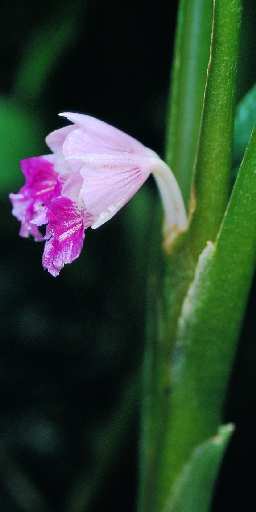
|
|
Fingerroot flower
Photo: Ben-Erik van Wyk |
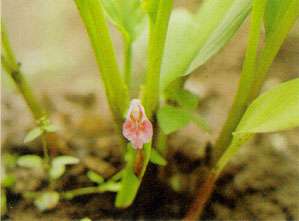
|
|
Fingerroot plant with flower
kanchanapisek.or.th |
It is only Thai cooking, however, where fingerroot plays the rôle of an important flavouring. Although it is employed in lesser extent than the related spices ginger and galanga, it often goes into curries, particularly fish curries (see coconut about Thai curry pastes) and it is a common ingredient for vegetable stews or fish soups (together with kaffir lime leaves). It can be grated or, more rarely, used in form of thin slices.
The dried rhizome has a somewhat stronger, more medical flavour and would not be used if the fresh rhizome is available (which, in Thailand, it is almost always). If you have to resort to the dried spice, you should soak it in warm water and grind it into a paste.
Fingerroot is quite often available in Thai food stores, where it is easy to
identify by its peculiar shape. Nevertheless, cookbooks often prove guilty in
confusing it with related rhizome spices, particularly the Indonesian spice
lesser galanga, whose name kencur
(often in Dutch spelling kentjoer) is often misapplied
to fingerroot.
